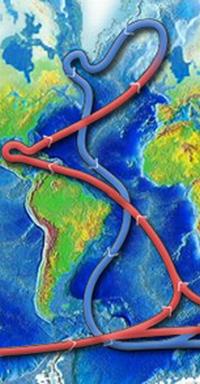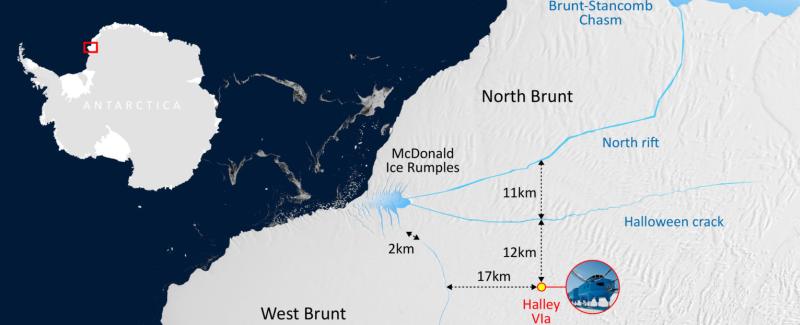 A new study has determined that the vast Atlantic Ocean current circulation system, including the Gulf Stream, is at its weakest in a thousand years. The slowing of the current, the Atlantic meridional overturning circulation (AMOC), could increase sea levels on the American East coast and may result in extreme weather in Western Europe.
A new study has determined that the vast Atlantic Ocean current circulation system, including the Gulf Stream, is at its weakest in a thousand years. The slowing of the current, the Atlantic meridional overturning circulation (AMOC), could increase sea levels on the American East coast and may result in extreme weather in Western Europe.
The AMOC is driven by two vital components of ocean water: temperature and salt. In the North Atlantic, warm, salty water flows northward off the U.S. coastline on the Gulf Stream and North Atlantic Current, carrying heat from the tropics. But as it reaches the middle latitudes, it cools, and around Greenland, the cooling and the saltiness create enough density that the water begins to sink deep beneath the surface.
The water then swings back southward and travels all the way to the Southern Hemisphere, submerged, where it makes its way to the Antarctic as part of a global system of ocean currents. The entire system is known as the ocean’s thermohaline circulation (“thermo” meaning heat and “haline,” salt), and it plays many critical roles in the climate. It is also referred to as the global ocean conveyor belt, because it redistributes heat worldwide.
Continue reading →
 A tidal turbine, built and tested in Scotland, has been installed in waters off Naru Island, part of Japan’s Goto Island chain. Simec Atlantis Energy said its pilot turbine had generated 10 megawatt-hours in its first 10 days of operation.
A tidal turbine, built and tested in Scotland, has been installed in waters off Naru Island, part of Japan’s Goto Island chain. Simec Atlantis Energy said its pilot turbine had generated 10 megawatt-hours in its first 10 days of operation.
 Last Friday, the Spanish Navy training ship
Last Friday, the Spanish Navy training ship 

 A large iceberg about
A large iceberg about  A
A  From maps to apps to chartplotters, we all rely on GPS these days, sometimes whether we realize it or not. Ethan Siegel recently wrote in
From maps to apps to chartplotters, we all rely on GPS these days, sometimes whether we realize it or not. Ethan Siegel recently wrote in  The
The 
 This weekend, the Italian team
This weekend, the Italian team  On February 21, 1862,
On February 21, 1862, 

 Recently,
Recently,  Today,
Today,  A
A 
 Happy Valentine’s Day! In honor of both the day and Black History Month, an updated repost about
Happy Valentine’s Day! In honor of both the day and Black History Month, an updated repost about  A recently discovered
A recently discovered  Today is
Today is